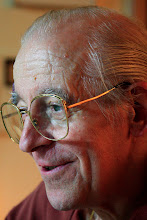Qua in Corea, la stagione delle elezioni e’ alle porte e stranamente c’e’ un fervente movimento fra i capi religiosi del paese. Un rispettato monaco buddista e’ indaffarato nell’appoggiare un promettente candidato politico, mentre un gruppo di ministri protestanti ha fondato un partito politico. Tuttavia queste persone non stanno agendo nello spirito di Gesu’, che difficilmente apprezzerebbe il loro comportamento.
Quando una folla di seguaci cercava di eleggere Gesu’ a loro re, egli gli appostrofo' dicendo: “Cosa andate a vedere nel deserto? Un’uomo che indossa vestiti lussuosi? Certamente no, coloro che indossano vestiti lussuosi vivono nella reggia del re." (Matteo, 11). Gesu’ traccio’ una netta linea fra il deserto e la reggia, e nello stesso tempo ne tracciava un’altra altrettanto netta fra religione e politica. Quando venne arrestato da Ponzio Pilato venne portato davanti al Sanhedrin, il tribunale giuridico degli ebrei, e sul podio dei testimoni pubblicamente deriso. Quando il governatore gli chiese: “Sei tu il re degli ebrei?”, rispose “Il mio regno non e’ in questo mondo.” (Giovanni, 18)
Durante i tempi crudeli dell’Impero Romano, Gesu’ mantenne sempre distanza dai zeloti, le forze ribelli che conbattevano per la liberta’ del popolo contro l’egemonia Romana. Quando i zeloti gli chiesero se era giusto pagare una tassa imperiale a Giulio Cesare, Gesu’ chiaramente rispose: “Da a Cesare quello che e’ di Cesare ed a Dio quello che e’ di Dio.”
Tuttavia, la storia mostra che la cristianita’ non ha sempre seguito l’insegnamento di Gesu’. Pe esempio, nel medioevo la chiesa cattolica ha pesantemente contribuito a riportare ai secoli bui l’intera Europa. Non c’e’ posto nella storia per un felice matrimonio fra quello che e’ di Cesare e quello che e’ di Dio. Il chiaro insegnamento di Gesu’ dal deserto rimane solamente nelle parole della fede che, fatta eccezione per rari casi, non vengono mai messe in pratica. Ricordo ancora di aver letto anni fa le sagge parole che il primo cardinale coreano, Stefano Kim Sou-hwan (1922-2009), pronuncio’ nel suo messaggio alla vigilia del Natale 1971, subito dopo che il presidente Park Chung-hee (1917-1979) aveva dichiarato lo stato di emergenza e riscritto la costituzione in modo da poter regnare sul paese per il terzo termine. Il cardinale rimproverava il governo di essere caduto preda delle tentazioni della dittatura e rimaneva l’aperto difensore della democrazia durante il turbulento periodo dei regimi militari. Le sue parole e le sue azioni hanno avuto piu’ peso che quello della multitudine dei partiti politici cristiani.
Nonostante questo, recentemente le chiese coreane, che dovrebbero servire da faro per il conforto di una societa’ appensantita dalla discordia, dalla rabbia e dalla credibilita’, si e’ invece schierata in prima linea nel conflitto creatosi fin dall’inizio dell’amministrazione dell’attuale presidente Lee Myung-bak (1941- , p.2008-2013). Sia il presidente che la societa’ cristiana stanno sbagliando, ma nessuno di loro sembra pentirsi. Gli scandali nati in alcune chiese cristiane coreane sono incredibili. Ministri di chiese importanti nel paese sono stati denunciati per appropriazione indebita, assalto ed altri simili delitti. Le persone che dovrebbero inginocchiarsi e pregare per il paese e la salvezza dei suoi cittadini hanno abbusato della loro liberta’ per unirsi ai politici.
In Germania c’e’ un partito politico cristiano ed i suoi menbri da buoni credenti pagano le tasse. Nessun ministro che viene pagato dallo stato si interessa di politica mentre veste titoli religiosi. Qua in Corea la comunita’ cristiana e’ spesso presa dalla fiamma della fazione come la principale setta presbiteriana che da sempre alterna periodi di cooperazione a quelli di discordia. Lo spirito di riforma, che e’ alla radice del protestantesimo, domanda grossi sacrifici alle chiese ed ai loro ministri, non attivita’ politica. I capi religiosi non devono usare i loro paramenti e titoli per guadagnare potere politico.
La cristianita’ deve servire il re del deserto non gli uomini di governo. I capi religiosi che svolgono attivita’ politica non possono guadagnare nulla, possono solo aggravare lo scetticismo verso la chiesa.
Seoul, Corea
24 dicembre 2011


























